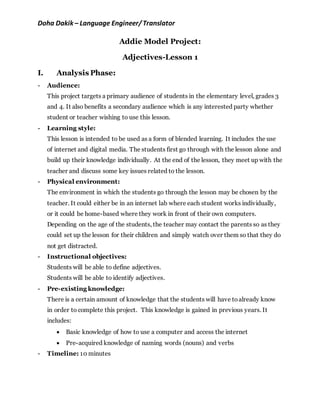This document outlines an educational lesson plan for teaching elementary school students (grades 3-4) about adjectives. The lesson uses a blended learning approach incorporating online and digital media. Students will first watch a short video defining adjectives, then practice identifying adjectives in sentences through interactive exercises on a PowerPoint. For assessment, students will play an online game to test their understanding of adjectives. The 10-minute lesson is designed to be completed individually by students and then discussed with the teacher.


